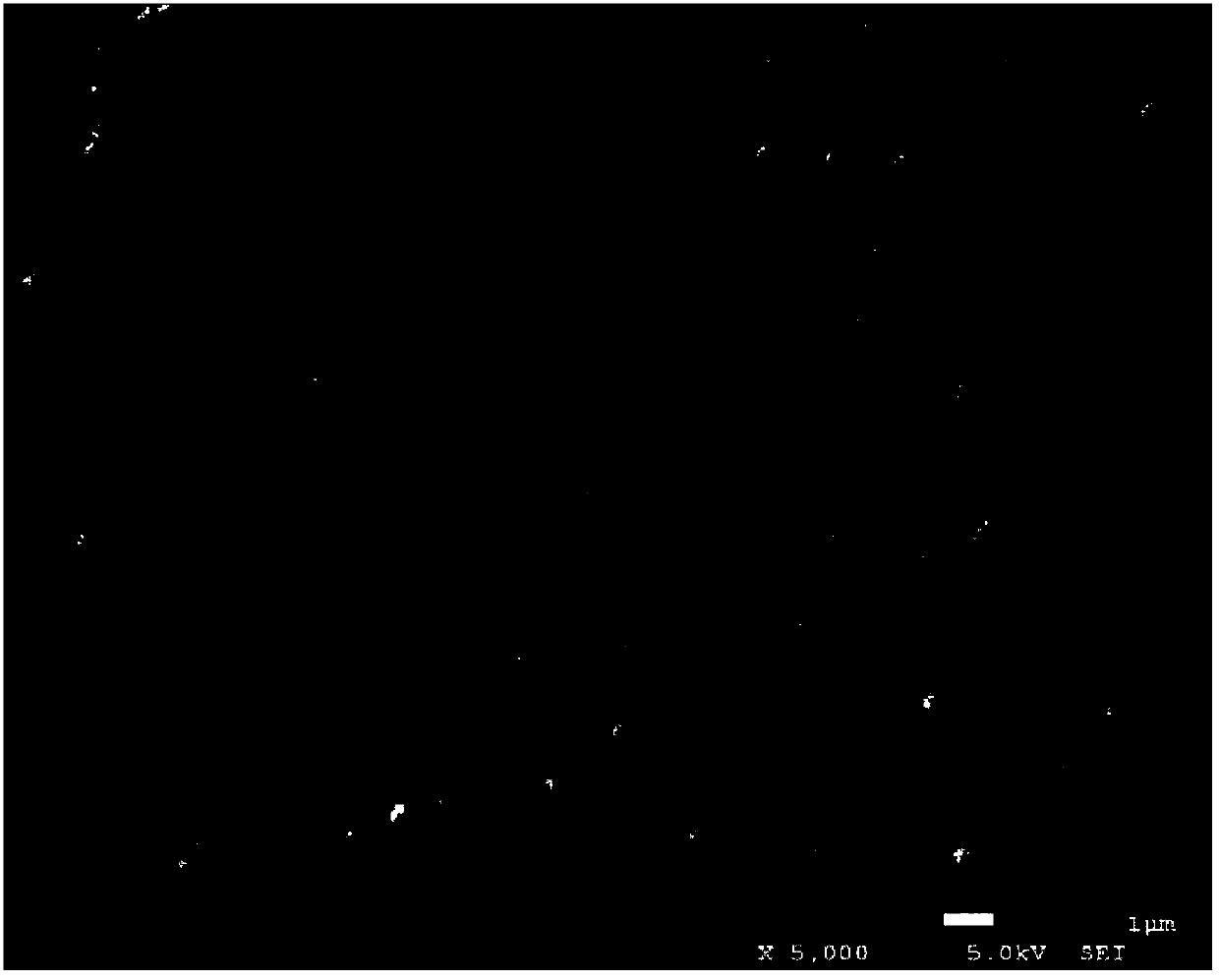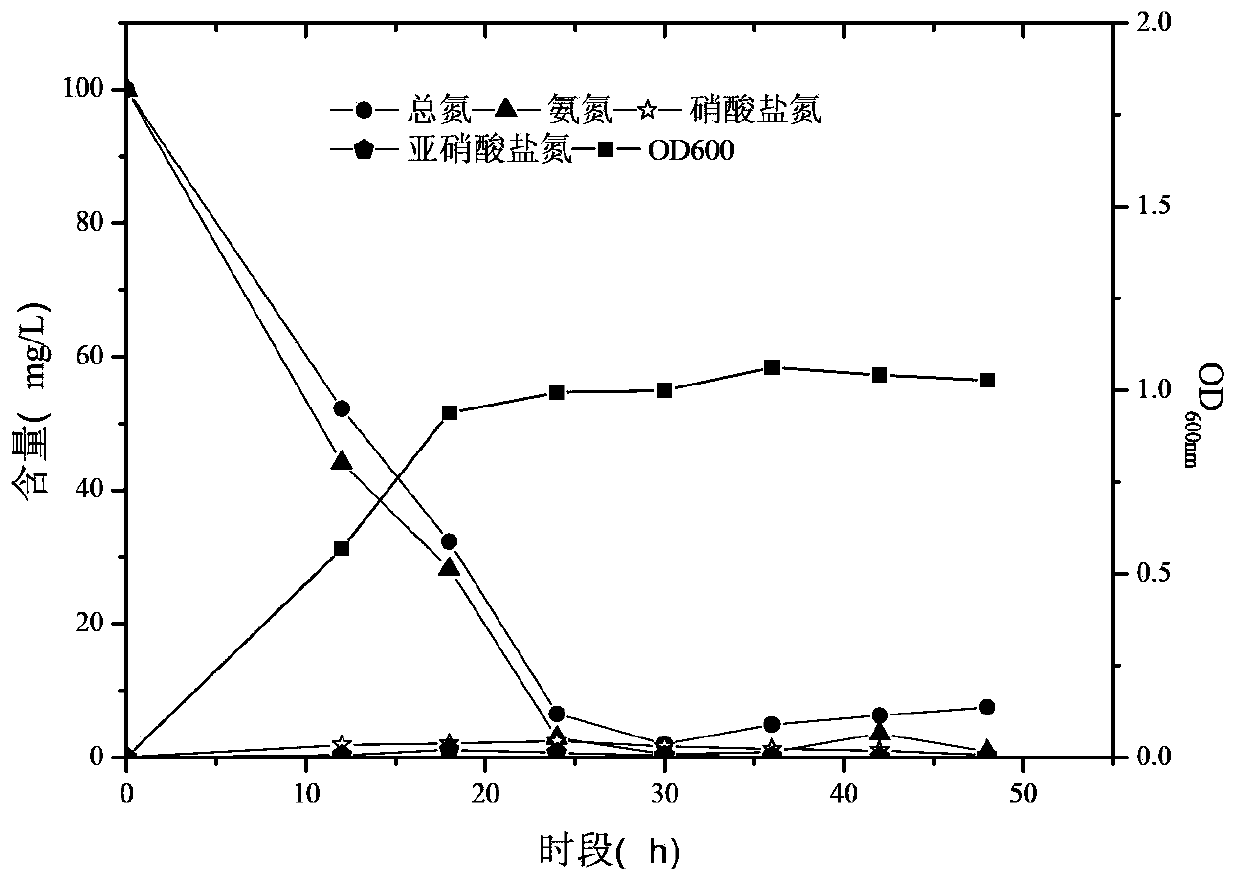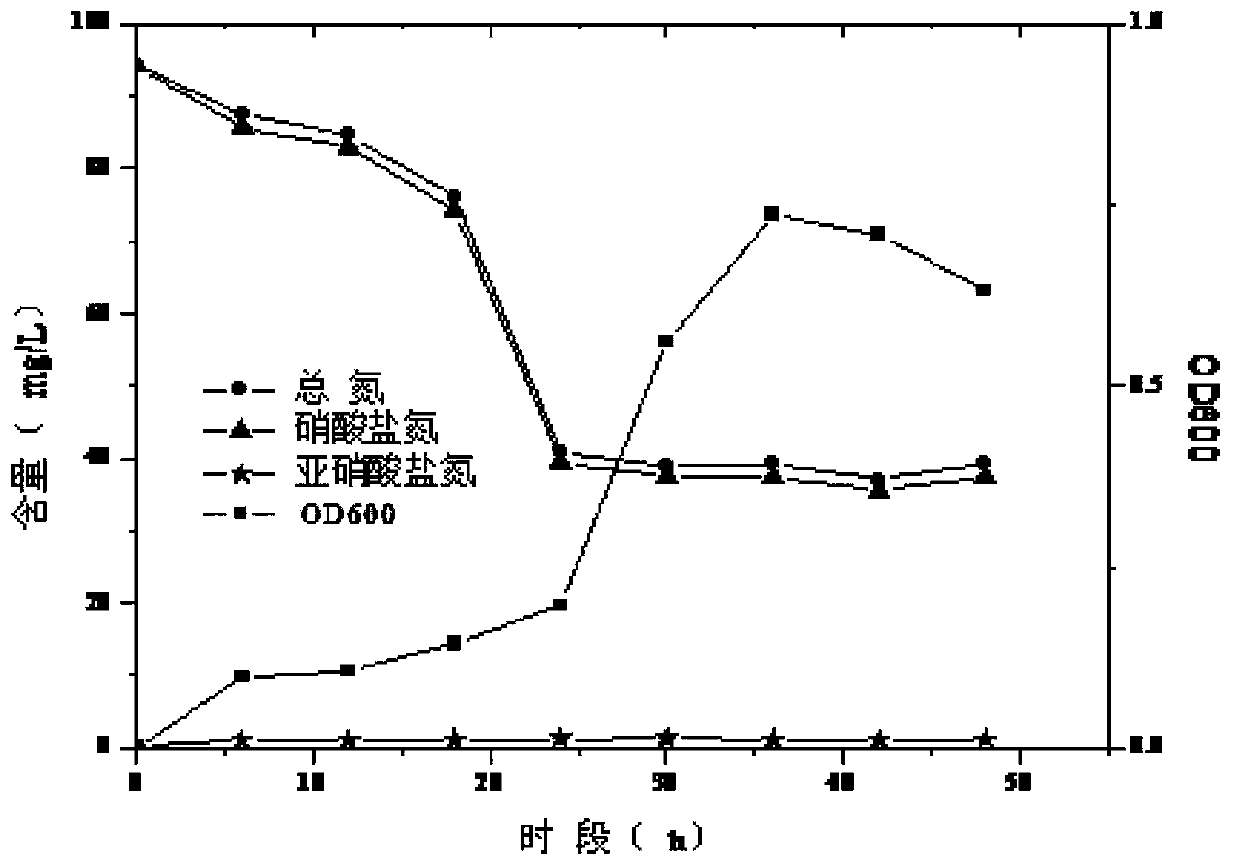High-efficient denitrifying flocculant-producing bacterial strain and application thereof
A denitrification and high-efficiency technology, applied in the direction of bacteria, water/sludge/sewage treatment, water pollutants, etc., can solve problems such as long start-up time, slow growth of nitrifying bacteria, difficult biomass, and increased operating costs
- Summary
- Abstract
- Description
- Claims
- Application Information
AI Technical Summary
Problems solved by technology
Method used
Image
Examples
Embodiment 1
[0090] Example 1: Acquisition of the high-efficiency denitrification and flocculation-producing strain
[0091] Take an appropriate amount of sludge in the Sequencing Batch Bioreactor (SBR) system, inoculate it in a heterotrophic nitrification medium for culture, and then transfer it to an aerobic denitrification medium for denitrification culture after 1 to 2 days. Take 0.5-1mL of bacterial suspension, and carry out gradient dilution with sterilized distilled water, and take 10μL for a dilution factor of 10 3 ~10 10 2 times the bacterial suspension was plated on the BTB isolation medium, and after 2-5 days of culture, the colony that caused the blue halo to appear in the surrounding medium was picked as the primary screening bacteria; Repeat the streaking to obtain pure single strains, and observe them morphologically, as figure 1 shown. Take the 18-24h bacterial culture solution and fill it in the basic medium containing glycerol at a volume ratio of 1:2, mark it well, an...
Embodiment 2
[0092] Example 2: Denitrification and flocculation performance of the high-efficiency denitrification and flocculation-producing strain
[0093] 1) Nitrogen removal performance
[0094] (1) Heterooxygen nitrification ability: Take a single colony of Acinetobacter sp.TN-14 and inoculate it into a heterotrophic nitrification medium at a volume ratio of 1-5%, at 30°C, 160- Shake and cultivate at 220rpm for 48 hours, and measure the OD of bacterial growth in the culture medium at intervals of 6 hours 600 , ammonia nitrogen, nitrate nitrogen, nitrite nitrogen and TN concentration changes. Such as figure 2 As shown in the test calculation, within 24 hours, the removal rate of the strain to ammonia nitrogen and total nitrogen reached 97.13% and 93.53%, respectively, and there was basically no accumulation of nitrate nitrogen and nitrite nitrogen.
[0095] (2) Aerobic denitrification ability: Take a single colony of Acinetobacter sp.TN-14 and inoculate it with NO 3 - -N and NO ...
Embodiment 3
[0100] Example 3: The specific operation of the high-efficiency nitrogen-removing floc-producing strain applied to the treatment of domestic sewage
[0101] Pick a single colony of Acinetobacter sp.TN-14, activate it in a heterotrophic nitrification medium for 20-24 hours, then take its activation solution, and inoculate it into In the sewage to be treated, cultivate at 30°C and 160-220rpm for 12-24h. The sewage to be treated [COD]=250~400mg / L; [NH 4 + ~N]=25~55mg / L, [TN]=30~60mg / L, [TP]=3.0~8.0mg / L.
[0102] The change of COD concentration in sewage before and after treatment was measured. After testing and calculation, the removal rates of COD, ammonia nitrogen and TN in actual domestic sewage reached 76.10%, 96.53% and 96.65% respectively within 12 hours.
PUM
 Login to View More
Login to View More Abstract
Description
Claims
Application Information
 Login to View More
Login to View More - Generate Ideas
- Intellectual Property
- Life Sciences
- Materials
- Tech Scout
- Unparalleled Data Quality
- Higher Quality Content
- 60% Fewer Hallucinations
Browse by: Latest US Patents, China's latest patents, Technical Efficacy Thesaurus, Application Domain, Technology Topic, Popular Technical Reports.
© 2025 PatSnap. All rights reserved.Legal|Privacy policy|Modern Slavery Act Transparency Statement|Sitemap|About US| Contact US: help@patsnap.com



